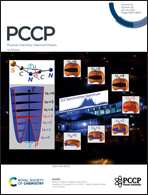Correlation-driven topological phase transition in 2D valleytronic materials: a mini-review
Abstract
Electronic correlation combined with spin–orbit coupling (SOC) may have a significant impact on the physical properties of two-dimensional (2D) transition metal magnetic compounds. Moreover, magnetic anisotropy (MA) is very important in determining magnetic, ferrovalley (FV) and topological properties of these 2D systems. Based on a density-functional theory (DFT) + U approach, it is found that the electronic correlation can induce topological phase transition in some special 2D valleytronic materials (for example FeCl2 and VSi2P4) with out-of-plane MA, and a novel valley-polarized quantum anomalous Hall insulator (VQAHI) and half-valley-metal (HVM) can be produced. These topological phase transitions are connected with a sign-reversible Berry curvature and band inversion between dxy/dx2−y2 and dz2 orbitals. However, for in-plane MA, the FV and nontrivial topological properties will be suppressed. For a given material, the correlation strength is fixed, but these novel electronic states and topological phase transitions can still be exhibited by strain in practice. The mini-review sheds light on the possible role of correlation effects in some special 2D valleytronic materials.

- This article is part of the themed collection: 2023 PCCP Reviews


 Please wait while we load your content...
Please wait while we load your content...